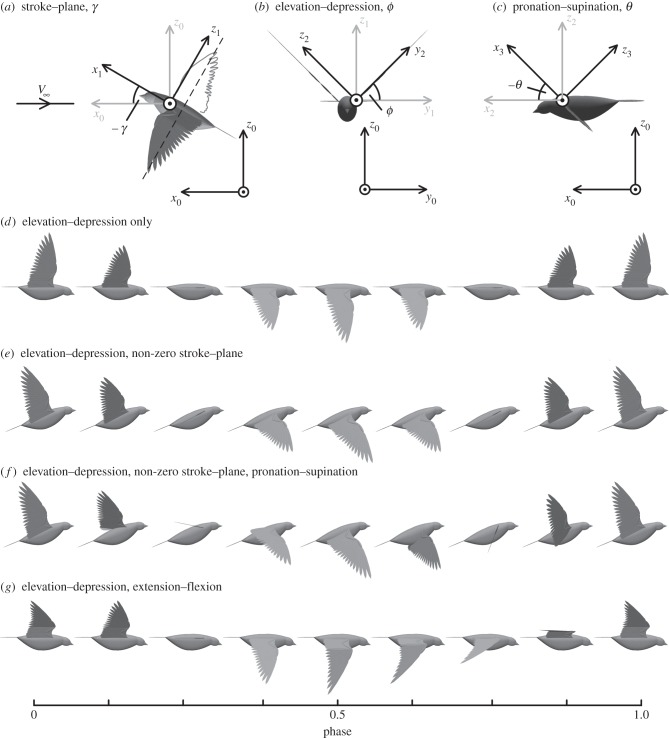Figure 2.
Illustrations of the three shoulder rotation angles: (a) wings beating with a negative stroke–plane angle, −γ; (b) positive values of ϕ represent wing elevation, whereas negative values represent wing depression; (c) positive values of θ represent pronation, whereas negative values represent supination. Example wing kinematics over a single wingbeat, with the start of the downstroke at phase = 0, mid-downstroke at phase = 0.25, end of downstroke (or start of upstroke) at phase = 0.5 and mid-upstroke at phase = 0.75: (d) wing elevation–depression, with zero stroke–plane, no pronation–supination and a fully extended wing; (e) wing elevation–depression at a constant, negative stroke–plane angle with no pronation–supination and a fully extended wing; (f) wing elevation–depression at a constant, negative stroke–plane angle, with pronation on the downstroke and supination on the upstroke and a fully extended wing; (g) wing elevation depression at zero stroke–plane, with no pronation–supination, and the wing fully extended on the downstroke and partially flexed on the upstroke; the angles between individual feathers and the wing chord are proportional to the wing extension, e, such that when the wing is fully flexed the feathers are aligned with the chord. The body orientation is included for completeness, and is drawn with the major axis normal to the stroke–plane.

